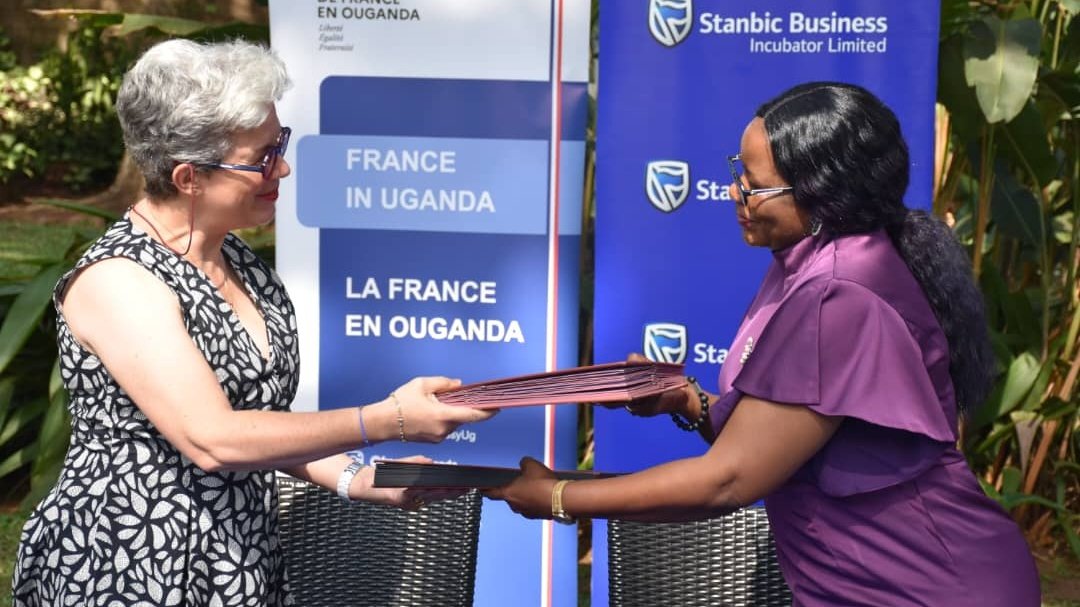How can the government reduce reliance on money lenders?
This financial paradox is raising a pressing question: why does a borrower choose a loan from a moneylender at such a high rate when cheaper options are available through formal banking channels?

In the bustling streets of Kampala, a stark economic reality is playing out, one that many Ugandans face on a daily basis: the growing dependence on moneylenders who charge exorbitant interest rates, often up to 120% per annum.
While banks offer loans at much lower rates, with figures hovering around 18%, many people in Uganda still turn to moneylenders.
This financial paradox is raising a pressing question: why does a borrower choose a loan from a moneylender at such a high rate when cheaper options are available through formal banking channels?
The answer is not just about the cost of borrowing; it’s about access, convenience, and financial inclusion—or rather, the lack of it.
While banks are an integral part of Uganda’s financial system, many Ugandans find themselves shut out from this formal sector due to several key barriers. To begin with, securing a loan from a bank often requires a certain level of documentation that many low-income earners simply do not have. A steady income, a verifiable credit history, and sometimes even collateral are prerequisites that many borrowers—especially in informal sectors—cannot meet.
This lack of accessibility leaves individuals with no other choice but to turn to moneylenders, who, though offering loans at eye-watering interest rates, often do so with fewer formalities. Moneylenders typically require less paperwork, and loans can be processed quickly, sometimes within hours or even minutes. In a society where financial emergencies are often immediate and pressing, the speed and ease of access offered by moneylenders become more attractive, even if it comes at a steep price.
The Strain on Borrowers
While moneylenders seem like a quick fix, they come with their own set of risks. The interest rates are astronomical, and the repayment schedules are often stringent, leaving borrowers with little room to breathe. In many cases, borrowers find themselves locked in a vicious cycle of debt, where they are forced to take out new loans to pay off old ones.
Take the case of John Bosco, a small-scale retailer in Kampala. “I had to borrow from a moneylender because I needed quick cash to restock my shop,” he explains. “The bank could have helped me, but they needed documents that I couldn’t provide, like a salary slip or a land title. The moneylender was much easier to deal with, but now I’m paying an interest rate that is just too high. I’m struggling to pay it off, and I’ve had to take out another loan just to manage.”
For many like Bosco, the allure of fast access to money often blinds them to the long-term consequences. Borrowers often end up losing more than they gain, as the interest they pay on these loans quickly surpasses the value of the original amount borrowed.
The Role of Government in Financial Inclusion
The key question that emerges is: why are Ugandans being forced into the hands of moneylenders? The answer lies largely in a gap in financial inclusion policies. While Uganda’s banking sector has made strides in increasing the number of people with access to financial services, a large percentage of the population remains underserved. According to the Bank of Uganda, more than 50% of Ugandans are excluded from formal financial services, leaving them vulnerable to informal lending systems.
To reduce reliance on moneylenders, experts argue that the government needs to create an environment where accessing bank loans is not only possible but also appealing. This requires addressing the barriers to accessing formal credit, including lowering the requirements for documentation and collateral, as well as simplifying the loan approval process.
Financial literacy also plays a crucial role. Many Ugandans, especially those in rural areas or informal sectors, lack the knowledge about how banks operate or how they can leverage financial products to improve their businesses or personal financial situations. Government and private sector partnerships could work to improve financial literacy and make formal banking more approachable.
Kampala, being Uganda’s economic hub, is home to many who are directly impacted by the lack of access to affordable credit. Opinions from residents of the city reveal the frustration with the existing financial system, as well as the hope that things might change.
“I’ve heard that banks have loans with low-interest rates, but how do I even start?” says Esther Achan, a food vendor in downtown Kampala. “They want so much information from me—proof of business, a bank statement, sometimes a letter from the landlord. I don’t have that. But the moneylender, on the other hand, just asks me to bring my ID and a few other details. It’s easier, even though it costs a lot.”
Esther’s sentiment is echoed by many who feel excluded from the formal financial sector. Yet, some are hopeful that the government will take action.
“I think the government needs to simplify things for us. I want to grow my business, but the banks make it hard. If they could find a way to make loans more accessible, even without all the paperwork, I would gladly go to a bank,” says Peter Kisembo, a boda boda rider who, like many others, relies on informal loans to manage daily expenses.
Policy Recommendations for Financial Inclusion
Experts believe that a multi-pronged approach is necessary to tackle the issue. One solution could be to encourage banks to lower the barriers to entry by streamlining their loan approval processes. For instance, banks could adopt technology-driven solutions, such as mobile banking apps and digital credit scoring, to make the process more inclusive.
Additionally, government-backed loan schemes could be introduced to provide low-interest loans to individuals who do not meet traditional banking requirements. This would not only increase access to credit but also help level the playing field, enabling more people to tap into the formal financial system.
Government interventions could also include supporting alternative lenders who charge more reasonable interest rates and are willing to work with lower-income borrowers. By regulating the informal lending market, the government could help protect borrowers from exploitative moneylending practices.
As Uganda grapples with these financial challenges, it is clear that a shift in policy and approach is required to address the growing gap in financial inclusion. By making access to formal loans easier, more accessible, and affordable, the government has the opportunity to reduce reliance on moneylenders and improve the livelihoods of millions of Ugandans.
In the end, for people like Esther, Peter, and John, having access to affordable credit could mean the difference between financial stability and continuing the cycle of debt. The government has a crucial role to play in making sure that Uganda’s financial system works for everyone, not just for those who can meet stringent requirements. Until then, many will continue to turn to moneylenders, caught in a web of high interest rates and mounting debt.







